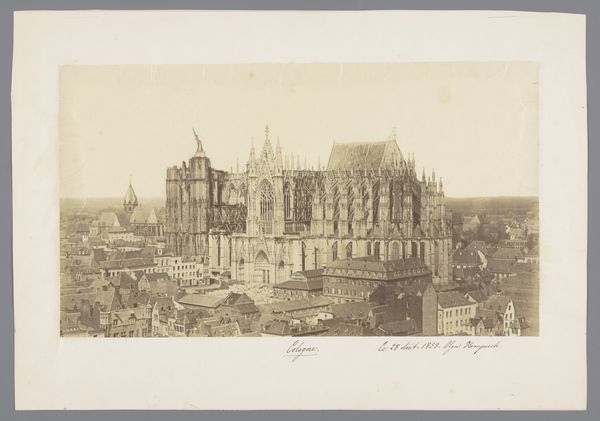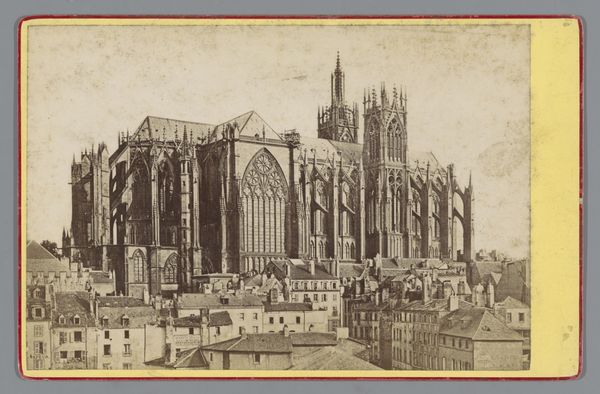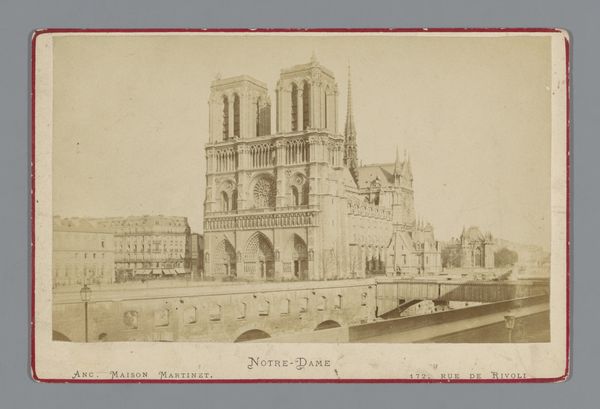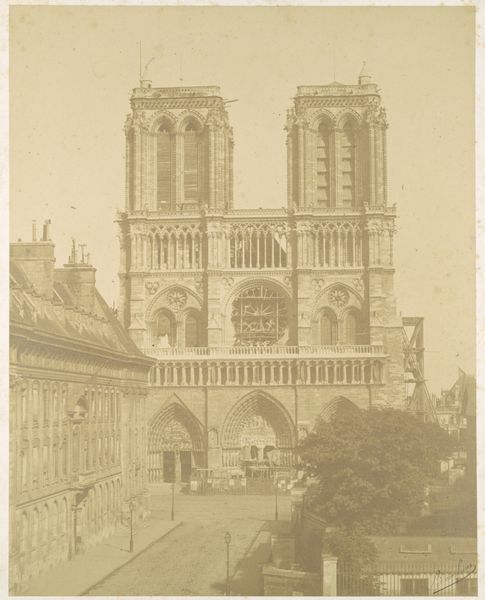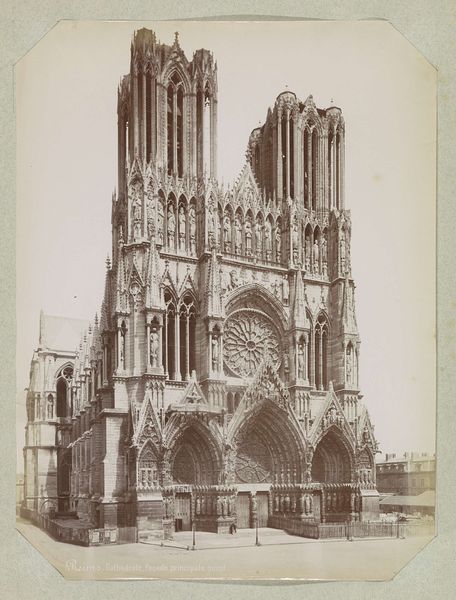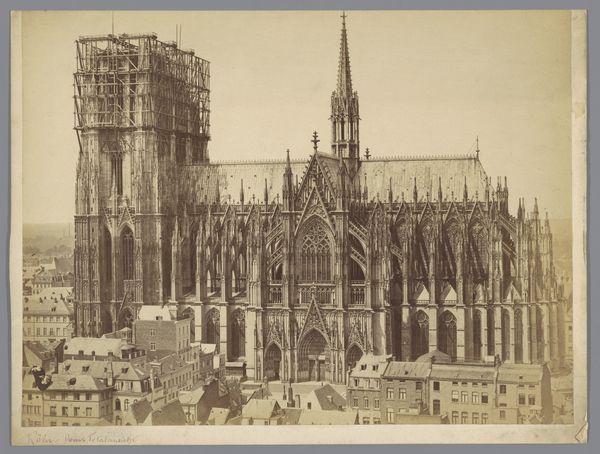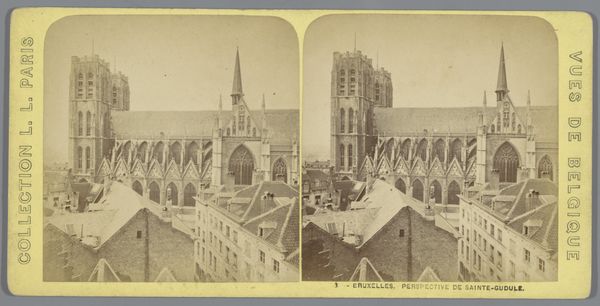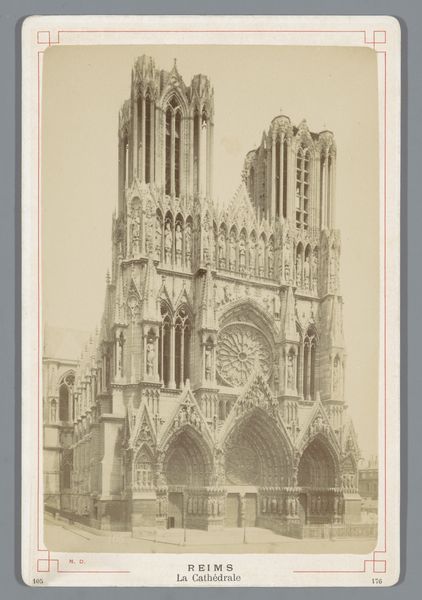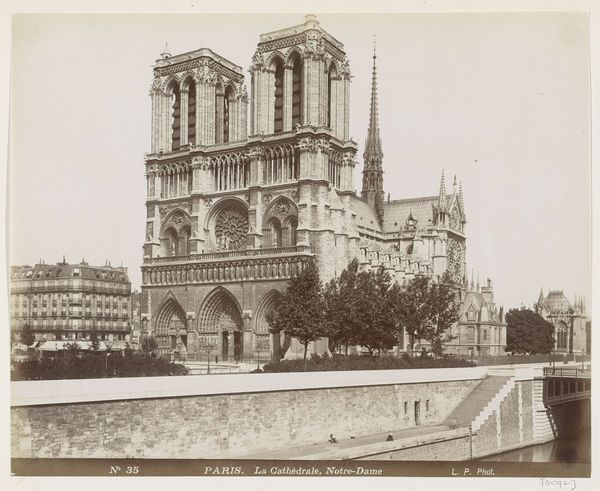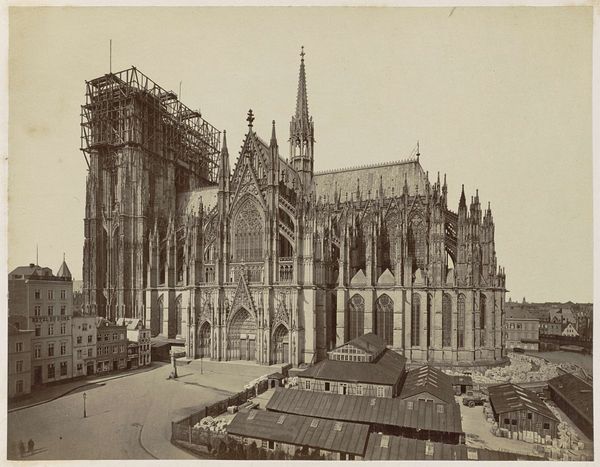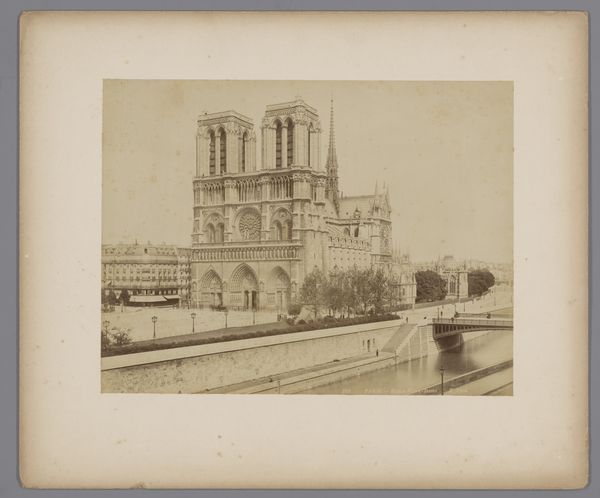
print, photography, albumen-print
# print
#
landscape
#
photography
#
ancient-mediterranean
#
cityscape
#
albumen-print
#
realism
Dimensions: height 108 mm, width 164 mm
Copyright: Rijks Museum: Open Domain
Étienne Neurdein made this photograph of Reims Cathedral using the albumen print process, sometime in the late 19th century. This technique involved coating paper with a layer of egg white and silver nitrate, creating a surface sensitive to light. The negative would then have been pressed against the treated paper and exposed to sunlight, resulting in a detailed, sepia-toned image. The albumen print was popular for its clarity and ability to capture fine details, making it ideal for architectural photography like this. But the process was labor-intensive, requiring careful preparation and printing to achieve the desired effect. Neurdein, like other photographers of his time, would have had to master the chemistry and technique of albumen printing, treating it like a craft, in order to capture this view of Reims. Considering the amount of labor involved in the process, this photograph invites us to reflect on photography's emergence as both an art and an industry.
Comments
No comments
Be the first to comment and join the conversation on the ultimate creative platform.
